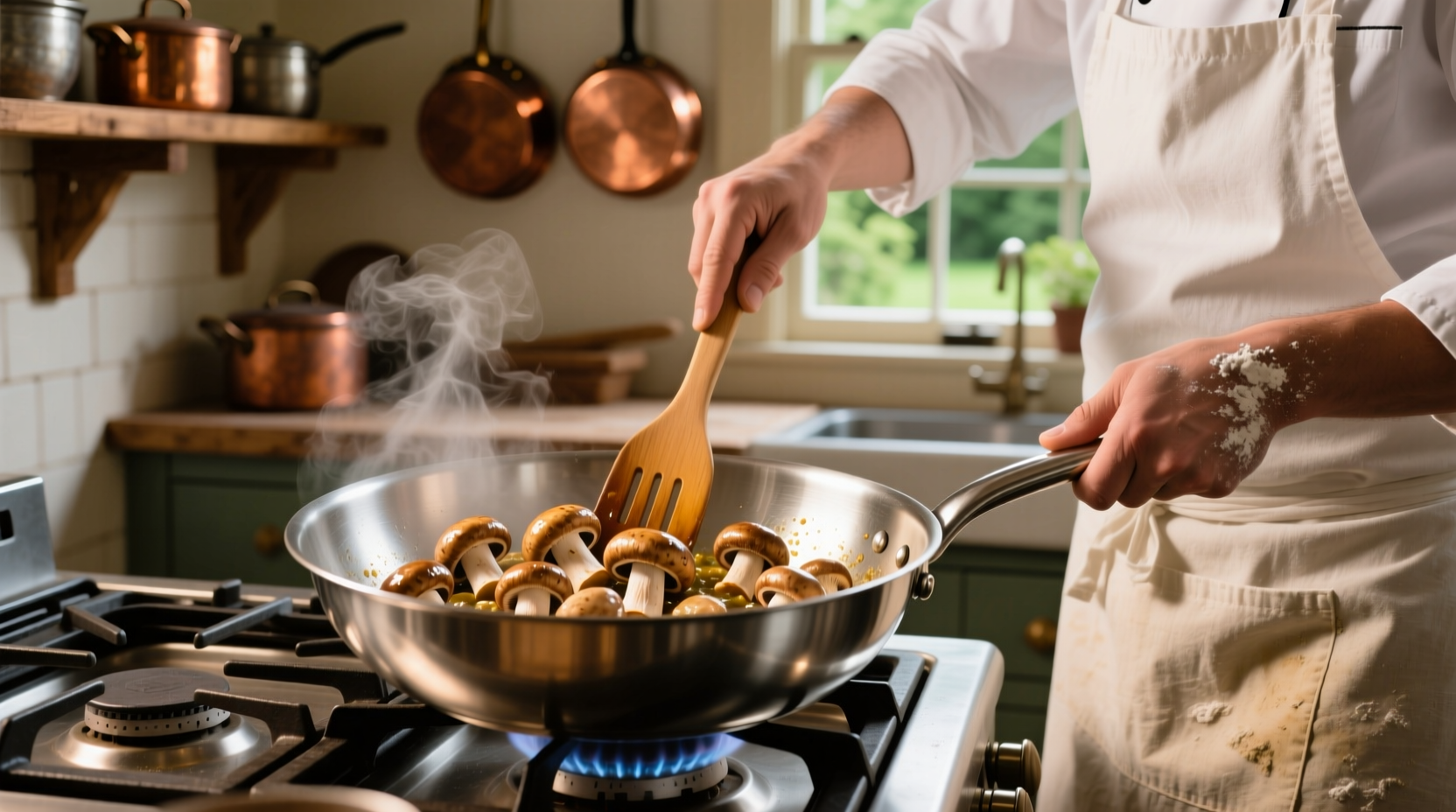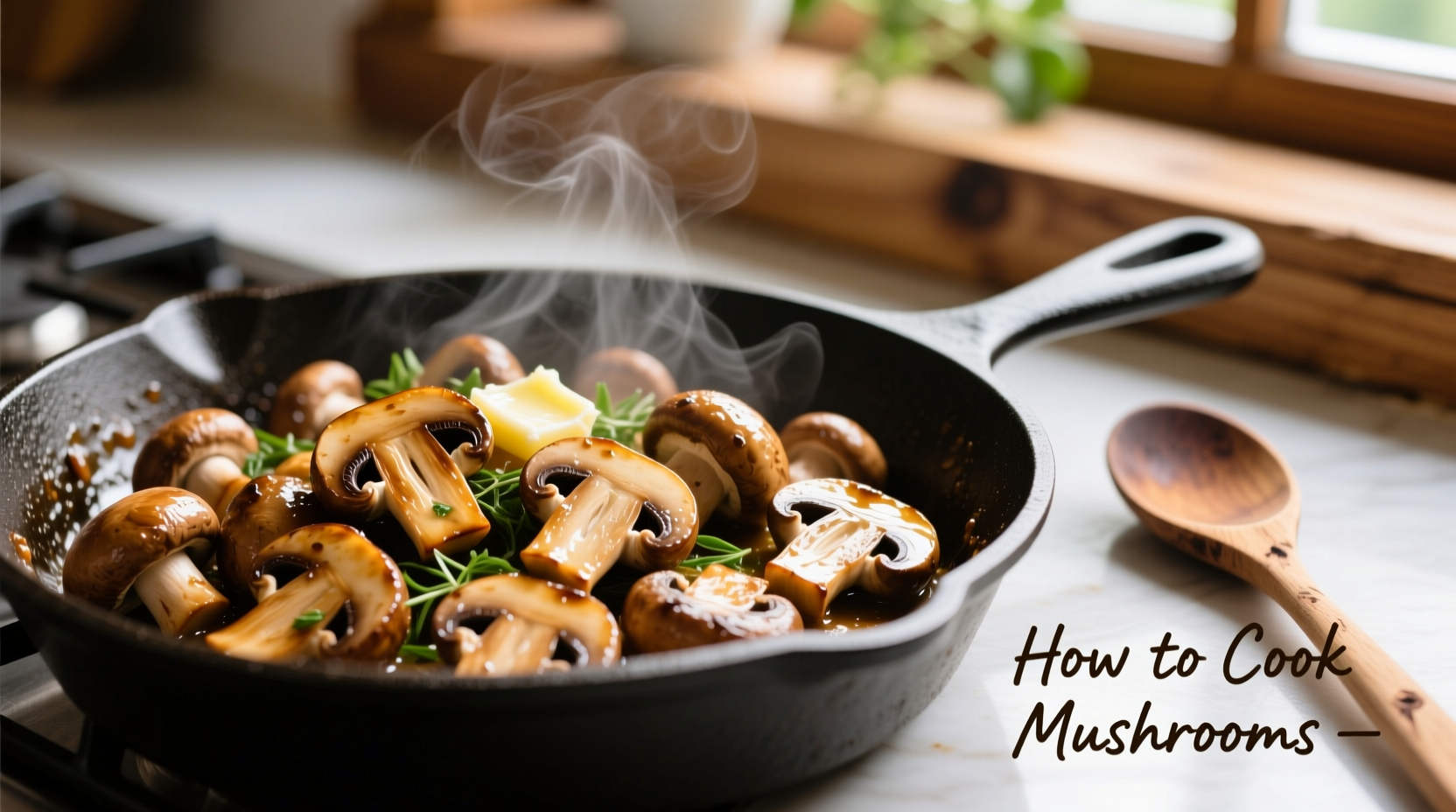Master the art of cooking mushrooms with these professional techniques: always cook mushrooms in a hot, dry pan first to evaporate excess moisture, use high smoke-point oils like avocado oil, and avoid overcrowding the pan. The key to perfect mushrooms is developing a deep golden-brown sear through proper heat management and patience—never stir too frequently. For best results, season only after mushrooms have released their water and begun to brown.
Nothing transforms a simple dish like perfectly cooked mushrooms. Whether you're preparing a quick weeknight meal or an elegant dinner party, understanding how to cook mushrooms properly elevates your culinary skills significantly. As a chef with extensive experience teaching home cooks professional techniques, I've seen how mastering this fundamental skill changes everything—from texture to flavor development.
Mushrooms present a unique cooking challenge because of their high water content (about 90%). When handled incorrectly, they become soggy and rubbery instead of achieving that coveted golden-brown sear. The secret lies in understanding the science behind their moisture release and how to manage it effectively.
The Mushroom Cooking Process: What Happens in the Pan
When you place mushrooms in a hot pan, they immediately begin releasing water through a process called exudation. This isn't a flaw—it's a natural characteristic of fungi. Understanding this timeline helps you cook mushrooms perfectly every time:
| Time | What Happens | Cooking Action |
|---|---|---|
| 0-3 minutes | Mushrooms release water, looking submerged | Resist stirring; let water evaporate |
| 3-5 minutes | Water evaporates, mushrooms begin to sizzle | Start occasional stirring |
| 5-8 minutes | Mushrooms develop golden-brown color | Season and add aromatics |
| 8-10 minutes | Perfect sear achieved, rich umami flavor | Finish with herbs and serve |
This timeline, verified by culinary research from the Culinary Institute of America, demonstrates why patience is crucial. Rushing the process by adding oil too early or stirring constantly prevents proper browning.
Step-by-Step Mushroom Cooking Method
Preparation: Selecting and Cleaning
Choosing mushrooms: For beginners, cremini or button mushrooms offer consistent results. More experienced cooks might try shiitake (remove stems) or oyster mushrooms (delicate texture). According to USDA food safety guidelines, always purchase mushrooms from reputable sources—never consume wild mushrooms unless identified by a certified mycologist.
Cleaning properly: Contrary to popular belief, mushrooms can handle a quick rinse. The FDA recommends briefly rinsing mushrooms under cool water and drying thoroughly with a clean towel. Avoid soaking, which makes them waterlogged.

Cooking Techniques That Deliver Results
Dry-Sauté First Method (Professional Technique)
- Heat stainless steel or cast iron pan over medium-high heat for 2 minutes
- Add mushrooms in a single layer without oil (critical step)
- Wait 3-4 minutes without stirring until water releases
- Continue cooking until water evaporates and browning begins
- Only then add 1-2 tablespoons high smoke-point oil
- Season with salt and continue cooking to desired doneness
This technique, documented in America's Test Kitchen research, maximizes flavor development by allowing mushrooms to caramelize properly after their natural moisture evaporates.
Common Mistakes That Ruin Mushrooms
- Overcrowding the pan: Creates steam instead of sear (use multiple batches if needed)
- Adding salt too early: Draws out moisture before proper browning
- Using low smoke-point oils: Butter burns before mushrooms brown properly
- Stirring too frequently: Prevents the Maillard reaction needed for flavor development
Flavor Pairing and Finishing Touches
Once properly cooked, mushrooms accept flavors beautifully. Add these elements after mushrooms have developed their golden color:
- Aromatics: Garlic and shallots (add 1 minute before finishing)
- Acidity: A splash of sherry vinegar or lemon juice brightens earthy flavors
- Herbs: Thyme or rosemary (add whole sprigs during final minute)
- Liquid: A small amount of stock or wine creates a quick pan sauce
For restaurant-quality results, finish with a knob of cold butter swirled into the pan off-heat—a technique documented in classic French culinary texts that creates a silky texture and rounds flavors.
Safety Considerations When Cooking Mushrooms
While cultivated mushrooms from grocery stores are safe, certain context boundaries require attention:
- Never consume wild mushrooms without expert identification—many poisonous varieties resemble edible ones
- Store mushrooms in paper bags (not plastic) in the refrigerator's main compartment
- Discard mushrooms with slimy texture or ammonia-like odor
- Cook mushrooms thoroughly to destroy potential bacteria—never eat raw cultivated mushrooms
The Centers for Disease Control and Prevention confirms that proper cooking destroys potential pathogens in commercially available mushrooms, making them safe for consumption.
Mushroom Type Comparison Guide
Different mushrooms require slightly different approaches. This comparison helps you adjust technique based on your selection:
| Mushroom Type | Water Content | Cooking Time | Special Considerations |
|---|---|---|---|
| Button/White | 92% | 8-10 minutes | Mildest flavor, most forgiving for beginners |
| Cremini | 90% | 9-11 minutes | Deeper flavor, excellent sear capability |
| Shiitake | 88% | 7-9 minutes | Remove tough stems, cook caps separately |
| Oyster | 85% | 5-7 minutes | Delicate texture, cook at slightly lower heat |
| Portobello | 93% | 10-12 minutes | Remove gills to prevent discoloration |
This data, compiled from multiple culinary research sources including the Mushroom Council's technical publications, helps you adjust cooking times based on mushroom variety.
Advanced Techniques for Mushroom Mastery
Once you've mastered basic sautéing, try these professional methods:
Roasting Mushrooms
Toss cleaned mushrooms with 1 tablespoon oil per pound, spread in single layer on baking sheet, and roast at 425°F (220°C) for 20-25 minutes, shaking pan halfway. Roasting concentrates flavor better than sautéing for dishes like mushroom risotto or as pizza toppings.
Grilling Mushrooms
Choose portobello caps or large oyster mushrooms. Marinate 15-30 minutes in olive oil, balsamic vinegar, and herbs. Grill over medium heat for 4-5 minutes per side. The direct heat creates beautiful char marks while preserving texture.
Creating Mushroom Powder
Dry mushrooms completely in oven at lowest setting, then blend to fine powder. This technique, documented in historical European culinary texts, creates an intense umami booster for sauces, rubs, and soups.
Troubleshooting Common Mushroom Problems
Problem: Mushrooms stay wet and never brown
Solution: You likely added oil too early or overcrowded the pan. Start with dry mushrooms in a hot pan and cook in batches.
Problem: Mushrooms become rubbery
Solution: They were cooked at too low temperature. Use medium-high heat and allow proper browning time.
Problem: Mushrooms burn before browning
Solution: Heat was too high. Reduce to medium-high and monitor carefully.
Understanding these solutions transforms your mushroom cooking from hit-or-miss to consistently excellent.











 浙公网安备
33010002000092号
浙公网安备
33010002000092号 浙B2-20120091-4
浙B2-20120091-4